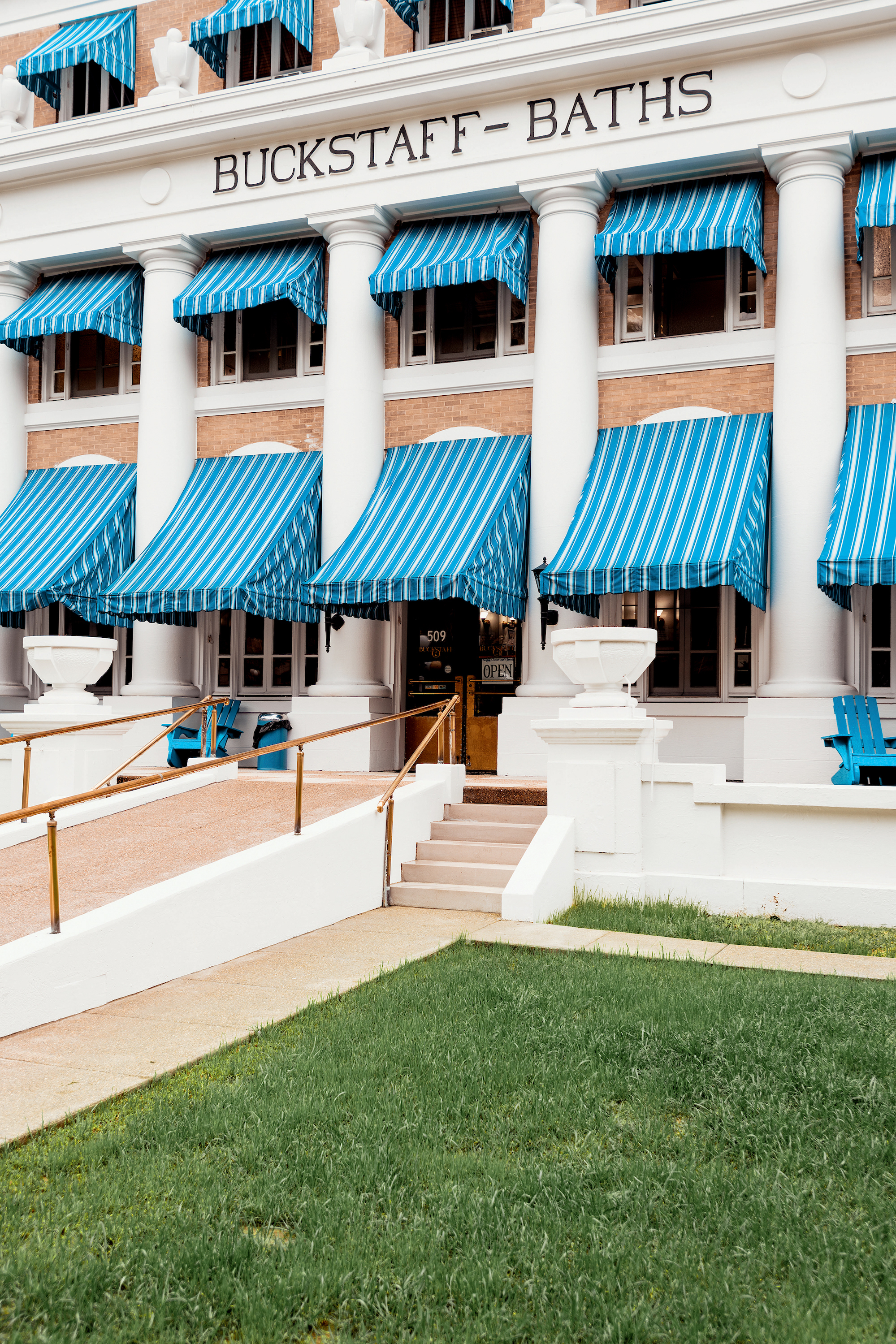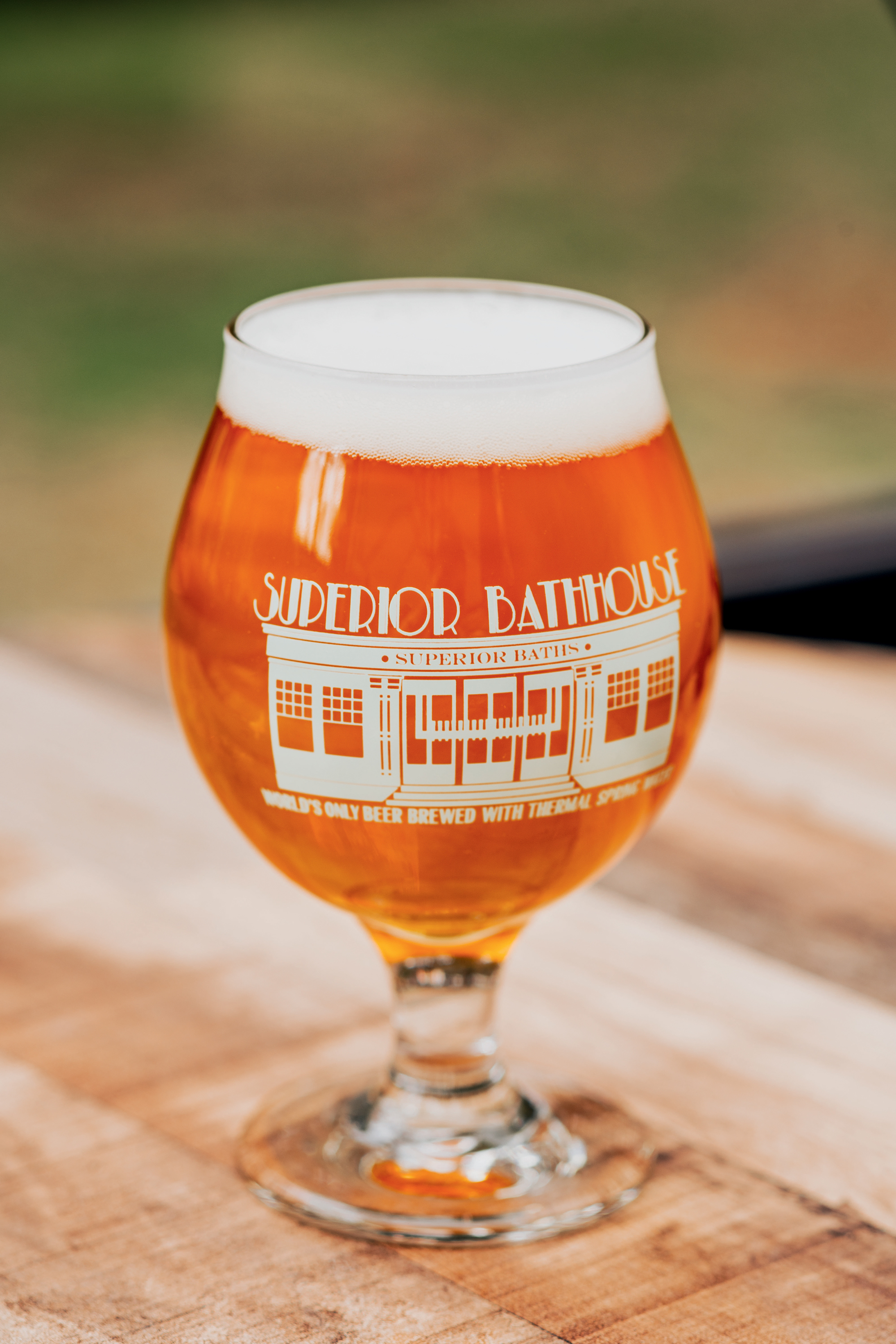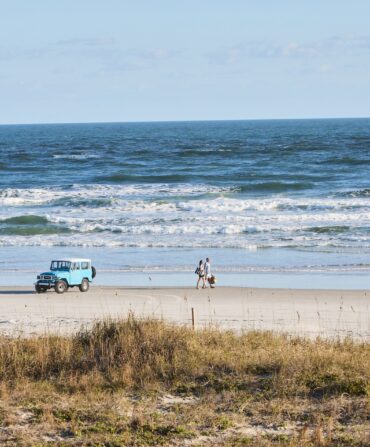Travel
A Weekend in Hot Springs, Arkansas’s Historic Mountain Oasis
The longtime resort town hits refresh with a new flow of hotels, breweries, and eats

Photo: HOUSTON COFIELD
My visits to Hot Springs, Arkansas, begin and end with filling a water bottle at the public jug fountain on Central Avenue. A carousel of spigots pour out the bounty: odorless, pristine mineral water that fell as rain four thousand years ago—when the pyramids were under construction in Egypt—and percolated deep into the earth, only to be forced up a fault line and out of the Ouachita Mountains to the tune of 700,000 piping hot (143°F) gallons a day.

My childhood self, an annual visitor to Hot Springs National Park from my hometown of Little Rock, did not appreciate this miracle of geology. But if the science was lost on me, the fact that the fountains mysteriously emitted swirling vapor, and that I could dip my hand into a trickle on the slope above town and find it magically, delightfully toasty, was not.
Over the three decades I have been visiting, Hot Springs has never been buzzier than it is today, thanks in part to creative new uses for its famous water—the same stuff that has made it a place to gather and to heal for ten thousand years, starting with Native Americans including the Cherokee, Quapaw, and Choctaw.
“Hot Springs has long had the slogan ‘America’s First Resort,’” says Tom Hill, the park’s museum curator. “In reality, when it all started, it was people’s last resort.” A town sprang up in the 1800s, and nineteenth- and early twentieth-century doctors attracted visitors by prescribing a restorative formula for all manner of maladies: three weeks of bathing to elevate body temperature and sweat out impurities, coupled with drinking the mineral waters and punctuated by walks and socializing in the mountain air. In the 1920s, Hill estimates, ten thousand people arrived by rail monthly for such treatment.
On a warm day, I retrace their footsteps at Buckstaff Bathhouse, the last of what were once eight houses on downtown’s Bathhouse Row to offer the traditional regimen. Men and women funnel into separate facilities, and a bather today pays eighty-nine bucks to get wrapped in a white sheet and cycled through stations, concluding with a massage, while sipping on mineral water. In succession, I step into a tub my attendant tells me dates from 1912, lie covered in hot towels, sweat from the neck down in a vapor cabinet (a metal box that serves as a sauna, with a hole for my head to pop out of), take a sitz bath, and rinse in what is called a needle shower, less painful than it sounds. (A luxurious state-of-the-art spa this is not, nor does it want to be; if you seek modernity, try the Astral Spa at Oaklawn.) Refreshed, I emerge into the sunshine and stroll along the quiet, brick-lined Grand Promenade path above the bathhouses toward the Arlington Resort Hotel & Spa.

Photo: HOUSTON COFIELD
Buckstaff Bathhouse.
The Arlington’s past guest list is star-studded—Barbra Streisand, Babe Ruth, Franklin D. Roosevelt, Al Capone (who favored room 443). Every summer, I used to chase my sister up and down the hallways here—the largest and once grandest hotel in the state—while my parents attended their continuing legal education as lawyers. In more recent years, the Arlington lost a bit of its shine. In 2017, when I brought my now husband from Europe to Hot Springs to show off Arkansas history, the hotel sat in a sad state of neglect. But the cobwebs are coming off. The Arlington has a new owner, and it debuted an exterior facelift in 2022, with interior renovations slated to wrap up by the end of this year, in time for its centennial. In the meantime, the hotel is taking reservations, its spa is open, and a cozy new bookstore awaits in its underbelly of shops.

Photo: HOUSTON COFIELD
Breakfast at the Reserve; the Reserve's dining room.
The Arlington isn’t the only place to stay: The Reserve, positioned within easy reach of the historic Oaklawn Thoroughbred racetrack, boasts wood-paneled opulence in a former private mansion. If you’ve driven here, either to stay or to admire its stunning neoclassical facade, you’re exactly four minutes from an Arkansas institution: McClard’s Bar-B-Q. I am unable to personally recommend a dish on the menu besides the tamale spread—the restaurant’s take on a Frito chili pie—having never ordered anything else since my dad first let me try it when I was seven or so. This trip, though, two minutes beyond McClard’s, I discover an equally worthy pie at Morrison’s, a cheerful blue-and-white food truck. Since 2017, Edgar Morrison has served up fresh fried pies in a seasonal parade of flavors, no canned fruit involved. I intend to order just one, but I end up with mixed berry, chocolate, pecan, and pumpkin, and take a giant gooey bite out of each. Morrison’s wife, Teresa, says that sometimes customers call to reserve a pie, lest someone snatch the last cherry or blueberry while they’re en route.

Photo: HOUSTON COFIELD
Cherry fried pies at Morrison’s; pie master Edgar Morrison.
If proximity to Oaklawn and pie feels less important than staying in the walkable, historical heart, the Waters hotel, former offices of doctors who once sent patients right across the street to the bathhouses to “take the waters,” puts you right in the action. Today one of those bathhouses serves as the park visitor center, another as an art gallery. At Hotel Hale, a bathhouse turned boutique hotel, the owner, who also happens to be the mayor of Hot Springs, might show you to your room or seat you for happy hour. Quapaw Baths & Spa offers more contemporary, communal pools. My favorite building revamp uses the water differently: for beer. I sample a flight in Superior Bathhouse Brewery’s outdoor beer garden.

Photo: HOUSTON COFIELD
A double Belgian beer, at Superior Bathhouse Brewery.
Another kind of brewery has also been making waves: Origami Sake, which opened last year thanks to a surprising international connection. More than thirty years ago, Hanamaki, a rural mountain spa town in northern Japan, sought a sister city in the United States. “We found common ground in our bathhouses and thermal springs,” says Mary Zunick, who has directed the exchange program for the past fifteen years. “And they’re about as far culturally from Tokyo as we are from New York.” A sake company offered an internship, and an Arkansan named Ben Bell jumped at the chance to spend two years living in Japan and working at the Nanbu Bijin Brewery. Now he’s brought what he learned to Origami. Despite the faraway counsel, the product itself is all local: The fully solar-powered building sources its two star ingredients, water and rice, from Hot Springs and Stuttgart, respectively. “Arkansas is the number-one rice producer in the United States,” Bell points out. “So the fact that there is an alcoholic beverage that uses only rice is a natural fit. Eventually, we want to make Arkansas the Napa Valley of American-brewed sake.”
Origami sake appears on menus all over town, including at locals’ new favorite cocktail lounge and restaurant, DONS Southern Social. The unmarked speakeasy can be accessed via two secret entrances I won’t spoil here. Once inside, I watch executive chef and Little Rock native Joshua Garland plate one of his standout dishes, deconstructed deviled eggs topped with alligator sausage.

Photo: HOUSTON COFIELD
Origami cofounder Ben Bell; Origami’s A Thousand Cranes sake.
Worthy spots that have been shaping the dining scene for a little longer include the Vault, established in an old bank six years ago, and Deluca’s Pizza, which has been around for a decade but moved to its current, retro-style Central Avenue location last year, serving pies that walk the crispiest, most delicious line just short of being burnt (the menu even has a disclaimer about it). And Hot Springs honors its legends, too: Later this year, Coy’s Steakhouse, an institution my parents frequented for date nights until it burned down in 2009, will reopen.

Photo: HOUSTON COFIELD
A squash and sorghum entree at DONS Southern Social; DONS executive chef Joshua Garland.
After dinner at the Vault—pasta drenched in hearty Bolognese sauce made with Arkansas beef—it’s time to make the hour-long drive back to Little Rock. But first, I stop on Central Avenue. Someone else is there at the public jug fountain, filling three huge containers. “What are you going to do with all that water?” I ask. “Oh, we live here,” he says, gesturing to his family in the car. “My grandma moved here thirty years ago, and she’s still rocking and rolling in her nineties. So this is all we drink.” I turn the spigot, thankful for the same gift from the mountains that so many others have received. I sip the water, hot and then warm, all the way home.







